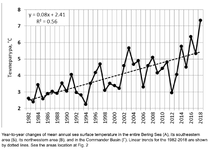It's more than just commercial though. Help is needed from the ocean to the spawning grounds and a one size all plan doesn't work as each basin has it's own particular set of challenges. It can be anything from bad hatchery practices, lack of large woody debris, straightening of rivers, poor spawning habitat, poor logging practices, commercial harvest, poor recruitment, invasive species, lack of estuary rearing habitat, dams, overharvest, poor season setting (basing seasons on projections that are often wrong), lack of life history diversity, changing of run timing, etc, etc, etc.. It's the old story of a thousand cuts.
The one constant is humans, there are simply too many of us. We've changed many of the things these fish need to survive in abundance and unfortunately I don't think we have the desire to do what really needs to be done. We changed too many things and going backwards just isn't in the cards.
Spot on man.
Great summary of the “thousand cuts” conundrum. We always want to simplify explanations and have one bad guy to point at. Unfortunately, when it comes to fish and wildlife, it is never quite that simple.

